The Art of the Natural
Britt Aamodt speaks to Minnesota furniture maker Ross Peterson; he takes his cues from nature when he designs his one-of-a-kind functional artworks
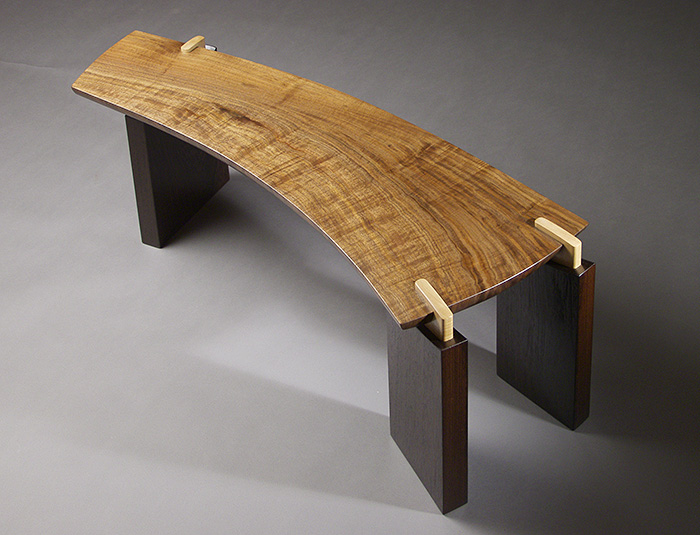
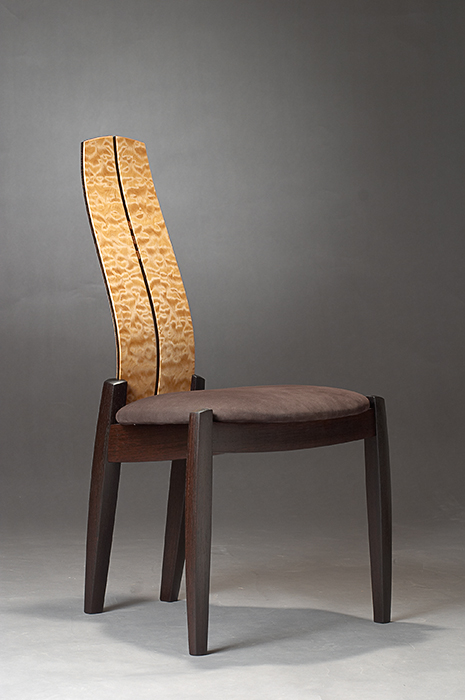
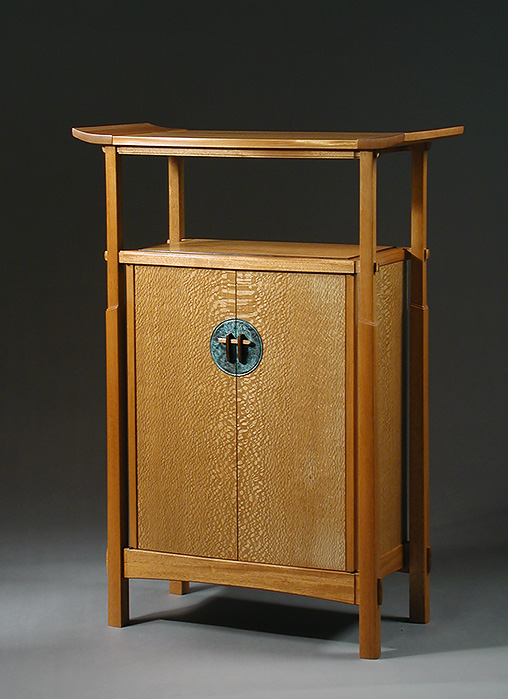
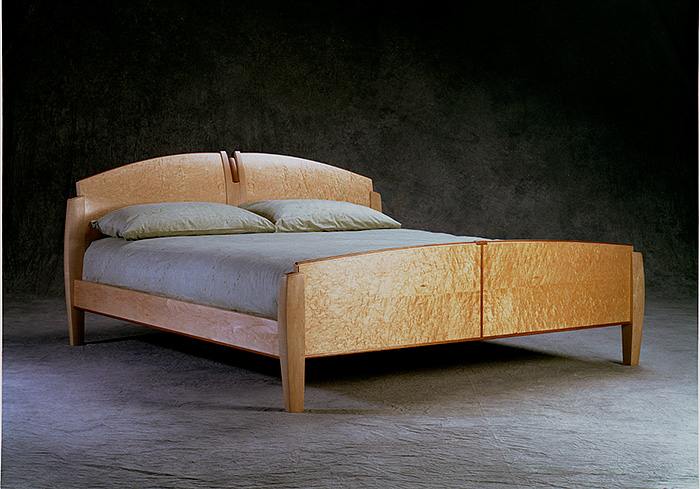
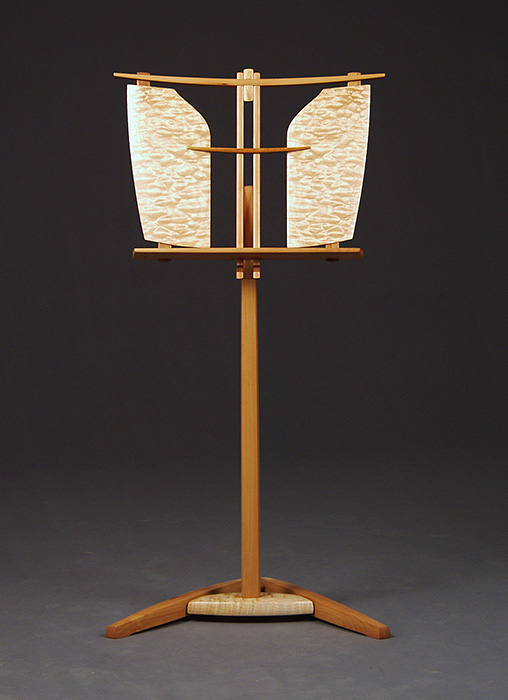
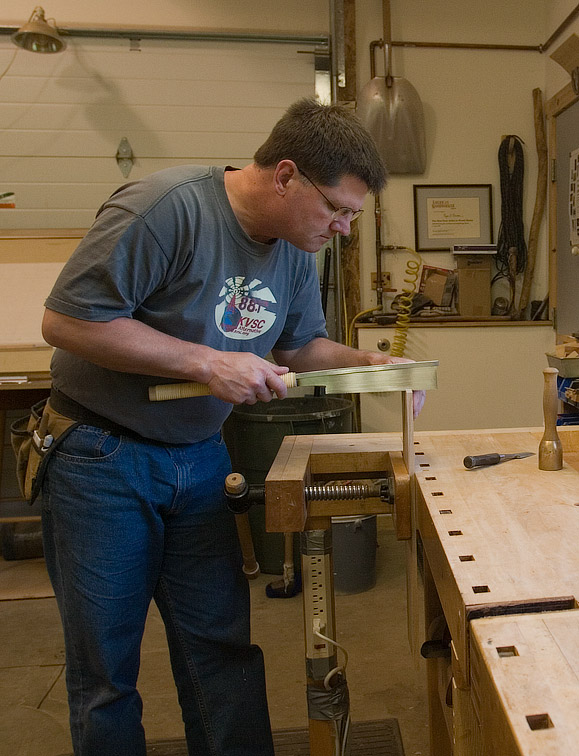
Wood isn’t like paint on an artist’s palette. It isn’t wedged on a board and thrown into vase shapes and mug shapes and platters by an expert potter. Wood has neither the consistency of an illustrator’s India ink nor the timed accuracy of a photographer’s developer. It is living tissue.
One moment, an oak flanks a residential neighborhood, extending roots deep underground, sucking nourishment into the xylem and phloem and conveying it upwards through trunk and canopy. The next, a chainsaw buzzes. The oak falls, and as soon as it hits earth, it ceases its life as tree and becomes lumber.
Yet even as lumber the oak asserts an organic individuality. Wood represents a life, which though holding many things in common with others of its species, experiences a unique combination of heat and cold, wet and dry, sunlight and mineral deposits that is permanently recorded in grain, texture and color. Stacked lumber is, in essence, the tree’s autobiography.
Furniture craftsman Ross Peterson is aware of his medium’s former life. Each plank represents a challenge: how to exploit or minimize its variability—knots, mineral deposits, swirls—in the piece’s overall design. The choice for Peterson is crucial, and illustrative of his entire approach to furniture making, which is to let the wood speak for itself.
The clients who contact his studio in rural Hanover, Minnesota, don’t seem to mind. Since 1996, when Peterson left a career in iron work to pursue furniture making full-time, they have plunked down anywhere from $1,000 to $16,000 to obtain his one-of-a-kind creations. Buyers are willing to invest the extra money for handmade furniture, Peterson explains, because as with buying any kind of art, they are purchasing an aesthetic statement that says as much about the buyer as it does about the thing being bought.
Born and raised in Little Falls, Peterson graduated from the University of Minnesota-Duluth with a music degree, and despite promptings to pursue a career in education, began his professional life in sporting goods. Sales work was fine, but a job opening in iron work promised better pay and more flexibility. It was while tackling the structural supports of skyscrapers and fashioning ornamental railings and elevator grills that Peterson began pottering in wood. In 1986, his wife bought him a router, and not long after he built his first workbench.
“I read enough about woodworking that I knew I had to have a bench if I ever wanted to get into furniture,” he says. “A bench is flat and you need something flat to register pieces off of. It’s also got clamps and vises for holding pieces while you work on them.”
At this point, Peterson considered furniture a nice hobby. “I had no intentions of going into it full time. But once I made that bench and enjoyed doing it then I went into obsession mode, which usually happens with anything I do.”
He began entering pieces in competitions, and winning. He also developed a steady stream of clients, which allowed him to give up iron work and devote himself fully to woodworking.
“I’ve got a backlog of nine to twelve months now,” he says. “But I don’t complain because without it I’d be worrying about the next client. So, it’s a balancing act. I do a couple of select shows every year—the Smithsonian Craft Show and the American Craft Exposition—and when I have time I work on new designs.
Though Peterson’s work is beautiful, it’s hard to define stylistically. The stepped accents and streamlining have an Art Deco feel, but the predominance of natural wood and exposed joinery reflect an Arts and Crafts sensibility. Though clearly American, Peterson’s designs draw heavily from foreign sources.
“I borrow some overall form shapes from Asian furniture. Some ergonomic things from Scandinavian furniture, especially my chairs, which have the good lumbar curves in the backs. Some detailing from the Chinese, like their escutcheons, their locks and handles, the medallion-like details on splats.”
He calls this synthesis Scandiasian Decocraftsman, a deceptively complex title for creations that rely on clean lines and the natural beauty of wood. Indeed, Peterson’s greatest influence has always been the raw material—wenge, lacewood, hop hornbeam, koa, bubinga, ironwood, walnut, eucalyptus, cherry. He mixes woods like paints: mahogany chair legs against a curly maple back, a cherry music stand accented in black wenge.
Peterson says his pieces are designed with a room in mind. Before the process can even begin, he visits or looks at photos of the space the furniture will inhabit. Sometimes a motif, like the column and block theme in a client’s South Minneapolis home, reappear in the finished product. Or in the case of a table he’s finishing for a New Jersey couple, ornament and line are muted to echo the clients’ white walls and hardwood floors.
“I don’t want to make anything that’s too big or too small or too gaudy, so it helps to see the space it’s going into,” says Peterson, who averages about 12 large pieces a year, a far cry from the thousands of items cranked out by production manufacturers.
Furniture craftsmen like Peterson are a rare breed in a post-industrial age where $500 will buy a dining set from Ikea. Manmade materials, fashioned to look like wood, abound, and drive down prices even more. However, Peterson contends there is no substitute for craftsman-designed and -made furniture, or for real wood.
“Wood does a lot of it by itself,” he says. “If you take a piece of beautiful wood and stick four legs under it, not having done anything else, it becomes a centerpiece.” Furniture, unlike a ceramic pot that may be one of many lined on a shelf, enjoys a position of prominence in a room. It focuses the eye and engages the senses (you smell the wood, touch the finish).
Peterson prides himself on making usable furniture, not sculpture. However, it is his practiced manipulation of design and regard for the raw material that transforms what would be purely functional in other hands into art as vital as the tree from which it sprang.